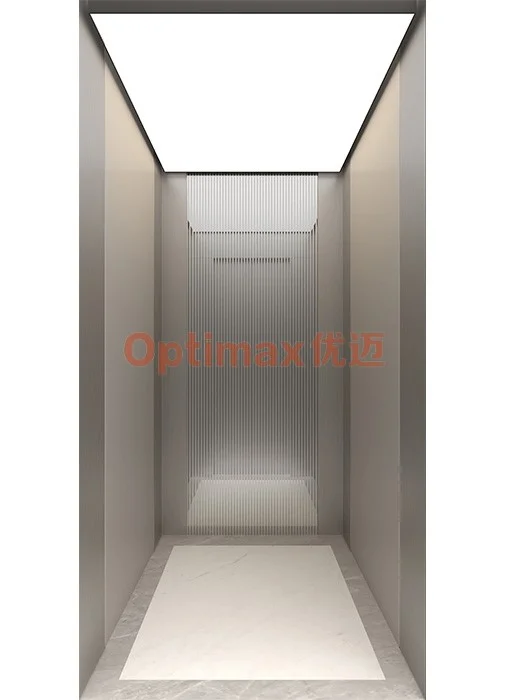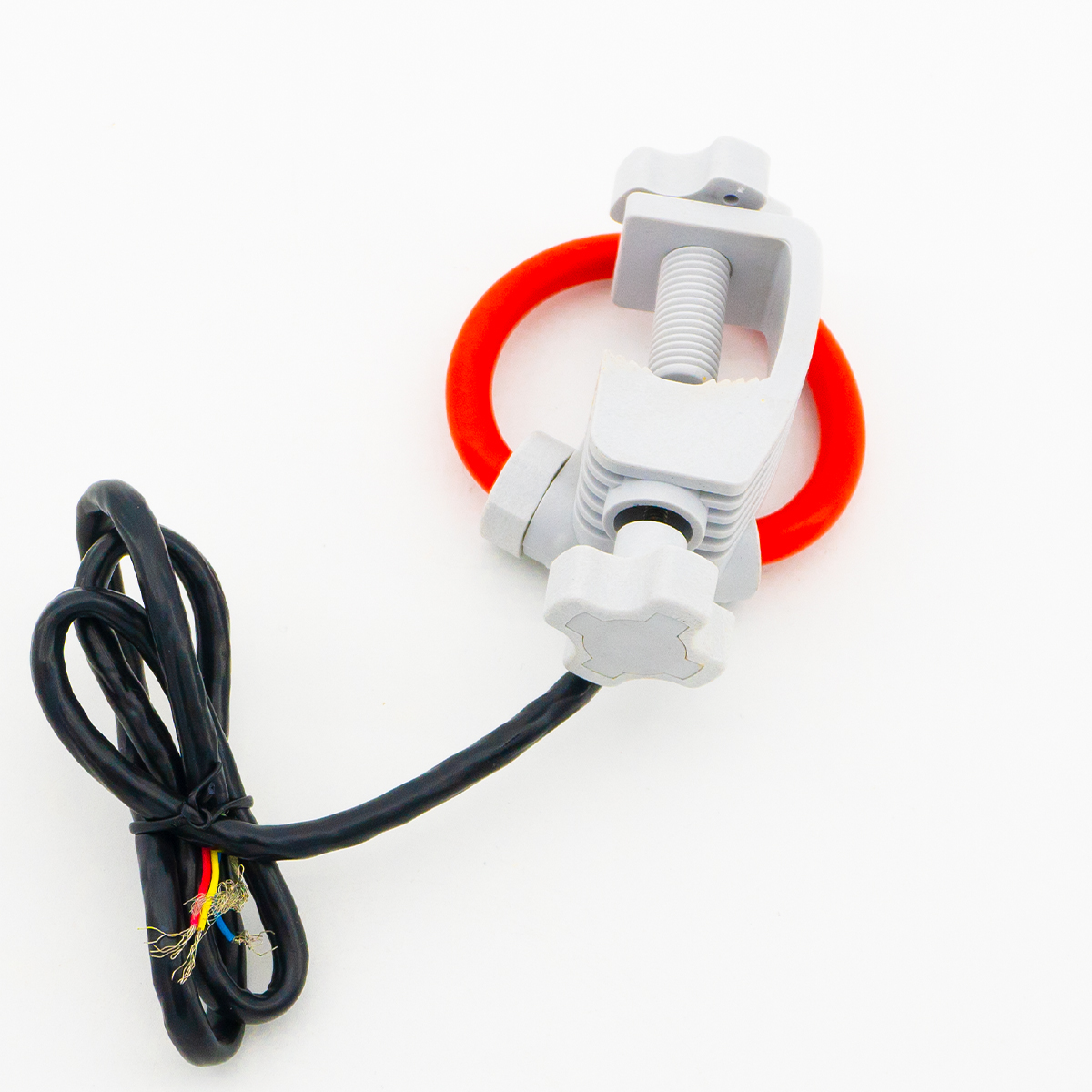In modern homes, luxury, convenience, and style are paramount, and one key feature that embodies all these elements is the home elevator. Once reserved for commercial buildings and high-rise apartments, home elevators have become an essential part of upscale residential properties. Beyond the practical benefit of providing seamless access to multiple levels, the design of a home elevator, especially its interior, has become a crucial component of the overall aesthetic and functionality of the home. This article Optimax will explore the key elements of home elevator interior design and how to integrate it into the home seamlessly.

Key Elements of Home Elevator Interior Design
Several design elements contribute to the overall appeal of the home elevator. These elements include materials, lighting, flooring, finishes, and custom features, all of which work together to create an environment that is both functional and visually stunning. Let's dive deeper into the critical aspects of home elevator interior design.
Materials: Creating a Luxurious and Durable Environment
The materials chosen for the home elevator interior design are critical in establishing both the style and functionality of the space. The right materials not only add beauty but also ensure durability and ease of maintenance. Home elevators need to be able to withstand frequent use while also maintaining a high level of aesthetic appeal. Here are some popular material choices used in home elevators:
-
Wood: Wood paneling has a timeless appeal, adding warmth and richness to any interior. Whether oak, walnut, mahogany, or other fine wood species, wood creates an elegant and inviting atmosphere. Custom carvings or inlays can also be incorporated to enhance the design further. In upscale homes, wood paneling gives the elevator a sophisticated, traditional look.
-
Glass: Glass is often used in modern elevator designs to create a sleek and transparent feel. It adds an open, airy quality to the space while allowing natural light to flow through. Glass panels can be incorporated into the walls or ceilings of the elevator, offering a more spacious and contemporary aesthetic. This is especially popular in homes with a minimalist or modern design.
-
Metal: Stainless steel, brushed nickel, and other metallic finishes contribute a touch of elegance to the elevator's design. They are durable, easy to maintain, and can be incorporated into various elements, such as door frames, control panels, and railings. Metallic surfaces can have a polished or matte finish, allowing for flexibility in design and customization.
-
Leather: For those seeking ultimate luxury, leather accents can be added to the elevator's design. Whether used on the walls, seats, or trim, leather offers a rich and tactile element to the space. It's often chosen for its comfort and sophisticated look, particularly in high-end residential projects.
Flooring: Enhancing the Visual and Functional Appeal
The flooring of a home elevator is not only about aesthetic appeal but also about safety, functionality, and durability. Home elevator floors must be sturdy and non-slip, as the last thing homeowners want is for their elevator to become a potential safety hazard. At the same time, the flooring should blend with the overall design of the elevator. Popular flooring options for home elevators include:
-
Carpet: Carpet is a great choice for creating a soft, luxurious feel in the elevator. It provides comfort, noise reduction, and warmth. There is an array of options, from plush and thick carpeting to more durable and low-maintenance options. Carpets can be customized to suit the style of the home, with a wide range of colors, textures, and patterns to choose from.
-
Vinyl and Laminate: These materials are known for their durability and ease of maintenance, making them ideal for high-traffic areas like elevators. Vinyl and laminate are available in a range of styles, from wood-look finishes to stone or tile patterns, making them versatile and affordable choices. These materials are also highly resistant to wear and tear, ensuring longevity.
-
Stone and Tile: For a more refined and opulent feel, stone or tile flooring can be a perfect choice. Materials such as marble, granite, or travertine add elegance and sophistication to the elevator, making it feel like a luxurious space. While stone and tile are more durable, they are also more expensive and require regular maintenance.
-
Wood: Wooden flooring creates a classic, warm look. It can be particularly effective in traditional homes, providing a sense of comfort and homeliness. Wood floors can be finished in a variety of stains or left natural to suit the overall design of the elevator. Hardwood floors are durable but require proper care to maintain their appearance.
Lighting: Setting the Mood
Lighting plays an essential role in home elevator interior design, as it helps set the tone and atmosphere of the space. Good lighting is not only functional, but it also enhances the beauty of the elevator's design. The right lighting can make the space feel inviting, luxurious, and warm, or create a sleek and futuristic ambiance. Some lighting options to consider include:
-
Recessed Lighting: Recessed lighting is a modern and minimalist option that provides subtle illumination. It is installed into the ceiling to maintain a clean and uncluttered look. Recessed lighting can be positioned to highlight specific design elements, such as artwork, the elevator controls, or the elevator's walls.
-
LED Strips: LED strip lights offer energy-efficient and customizable lighting options. LED strips can be placed along the base or ceiling of the elevator to create an ambient glow. They also come in a range of colors, making it easy to set the desired mood or tone for the space.
-
Chandeliers and Pendant Lights: For a touch of elegance and glamour, chandeliers or pendant lights are excellent options. A well-designed chandelier or pendant light can serve as the focal point of the elevator, making the space feel grand and opulent. These fixtures are perfect for larger, more luxurious elevators.
-
Natural Light: When possible, incorporating natural light into the elevator design can make the space feel more expansive. Large glass panels or windows allow sunlight to enter the elevator, creating a bright, open feel. This design element is ideal for homes with beautiful views or those that want to promote a more open, airy atmosphere.
Custom Features: Personalizing the Experience
One of the main advantages of home elevator interior design is the ability to create a truly personalized space. Custom features can be added to cater to the specific needs, tastes, and preferences of the homeowner. These personalized touches enhance both the functionality and the overall luxury of the elevator. Some popular custom features include:
-
Control Panels: The control panel is one of the most important elements of a home elevator. Today, control panels are sleek, modern, and easy to use, featuring touchscreens or buttons that are intuitive and simple. Custom panels can be made from materials such as glass or metal, seamlessly blending with the rest of the elevator's design.
-
Seating: For larger elevators or those designed for people with mobility challenges, seating may be incorporated to increase comfort. The seating can be upholstered in leather or fabric to match the elevator's interior, providing a luxurious resting space during the ride.
-
Sound Systems: Adding an integrated sound system can make the elevator experience more enjoyable. Homeowners can listen to their favorite music or podcast while riding between floors. Sound systems can be integrated into the ceiling or walls, providing a clean, unobtrusive setup.
-
Decorative Elements: Custom artwork, mirrors, or special wall treatments can be added to personalize the elevator. These elements add visual interest and ensure that the elevator interior feels cohesive with the rest of the home's decor.
How to Incorporate Home Elevator Interior Design into Home
When incorporating a home elevator into your interior design, it's crucial to ensure that it complements the overall layout and style of the home. Here are some tips for integrating home elevator interior design into your living space:
-
Consider the Space: The elevator should be installed in a location that makes sense within the flow of the home. Whether it's at the center of the house or placed discreetly behind walls, the elevator's interior design should harmonize with the surrounding decor.
-
Custom Design to Match the Theme: Whether you prefer a classic, modern, or eclectic style, ensure that the elevator design matches the rest of the home. Customization is key to making the elevator feel like a seamless part of the home's aesthetic.
-
Work with Professionals: To ensure the best results, work with professional interior designers and elevator specialists who can help you create a functional and aesthetically pleasing space. Their expertise can ensure that the materials, finishes, and features align with your vision for your home's elevator interior.
The home elevator interior design is an essential aspect of enhancing the luxury, comfort, and functionality of your home. From the choice of materials to the lighting and custom features, every design decision plays a significant role in creating a unique and functional space. By carefully considering each element of the design, homeowners can create an elevator that not only serves as a practical means of transport but also a statement of style and luxury. Whether for convenience, accessibility, or simply to add an element of elegance, home elevator interior design allows homeowners to enjoy a truly elevated living experience.
https://www.xizi-ec.com/Home-Lift-Series
www.xizi-ec.com
Hangzhou Optimax Tech Co., Ltd.


+ There are no comments
Add yours